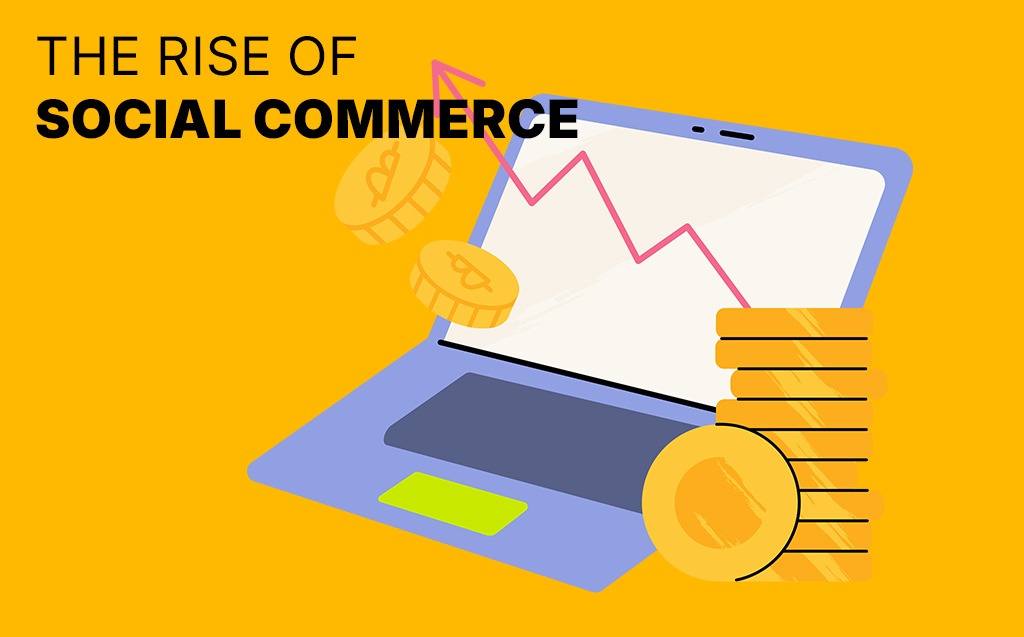TL;DR: - Social commerce, which is selling directly on social media platforms, is changing online shopping in 2025. Features such as shoppable posts, live selling, user-generated content, influencer partnerships, and AI-driven personalization make it simpler to convert followers into paying customers without leaving the app. Businesses gain from increased engagement, better conversion rates, and stronger customer loyalty. However, success depends on picking the right platforms, staying genuine, and providing a seamless shopping experience.
Social commerce is no longer just a trend. It is becoming a key part of how businesses drive sales online. By combining e-commerce with social media, brands can turn casual scrollers into paying customers without them ever leaving their favorite apps. This change is transforming how consumers shop and how businesses market their products. Industry trends show that social commerce is set to grow rapidly, making it an essential strategy for modern businesses.
For companies looking to boost their presence on these platforms, we at Inqnest specialize in social media optimization. We offer a perfect mix of engaging content and sales-driven strategies.
What is Social Commerce?
Social commerce means selling products directly on social media platforms. Unlike traditional e-commerce, where shoppers find a product on social media and then go to another site, social commerce allows the entire buying journey—product discovery, selection, and payment—within the app.
This smooth approach removes obstacles in the shopping process. It makes it easier for consumers to buy on impulse. Platforms like Instagram, TikTok, Pinterest, Facebook, and even YouTube offer special features for social commerce, such as shoppable posts and live selling tools.
Key Features That Make Social Commerce Powerful
- Shoppable Posts: - Shoppable posts include product tags directly in images and videos. When a user taps on the tag, they can quickly see product details, pricing, and buying options. This works well for fashion, beauty, lifestyle, and home décor brands because it links the consumer to the product in a straightforward manner. For instance, Instagram Shopping lets brands create posts and Stories with clickable product tags. TikTok, however, adds product links to videos and creator content, which allows a viral post to lead directly to sales.
- Live Selling: - Live selling is one of the fastest-growing segments of social commerce. During these sessions, brands or influencers host live video events to showcase products, answer questions in real time, and encourage immediate purchases. This approach fosters trust and creates a sense of urgency, as viewers understand that deals or availability may be limited. Retailers and creators have experienced significant increases in engagement during live sessions compared to regular posts. This format blends entertainment, interaction, and shopping, making it especially effective for product launches, limited-edition releases, and holiday sales.
- User-Generated Content (UGC): - User-generated content plays a key role in social commerce. Customer reviews, unboxing videos, and images of real-life product use help potential buyers feel more confident in their choices. UGC adds authenticity, especially in a market where consumers are cautious of marketing that feels too polished. For small and local businesses, this is an affordable way to build trust. Using UGC can expand reach and promote community participation. Many successful campaigns encourage customers to share their experiences online. This creates a steady stream of new, relatable content.
- Influencer Collaborations: - Collaborating with influencers, especially micro-influencers, has become a popular tactic in social commerce. Micro-influencers usually have smaller but very engaged audiences. Their recommendations feel more personal and trustworthy. Influencer marketing has changed from just raising brand awareness to driving direct sales. Many influencers now include shoppable links in their posts, Stories, and live streams. This turns their social media presence into strong sales channels. For businesses looking to enter the social commerce space, understanding this shift is crucial. Our detailed blog on digital marketing explains how local businesses can adjust to these changes.
- AI-Powered Personalization: - Artificial intelligence is making social commerce more effective. Platforms use AI to analyze user behavior and display products they are likely to purchase. AI chatbots, personalized product suggestions, and focused content provide each user with a customized shopping experience. This personalization improves conversion rates since customers see products that fit their preferences, budgets, and past shopping habits.
Why Social Commerce Matters for Businesses
- Increased Engagement and Conversions: - Social commerce lets brands connect with customers where they are, scrolling through feeds and interacting with content. Since users can buy products without leaving the platform, the buying journey becomes quicker and easier, which leads to better conversion rates.
- Enhanced Customer Experience: - Consumers appreciate convenience. Being able to find, review, and buy products all in one app creates a smooth and enjoyable shopping experience. It’s not just about making sales; it’s about making the whole process feel natural and engaging.
- Wider Reach and Brand Visibility: - Social media platforms have billions of active users. Social commerce takes advantage of this large audience, allowing brands to reach more people without depending only on traditional e-commerce sites. This is especially helpful for small businesses that may not have big marketing budgets but still want to compete with larger companies.
- Building Trust and Brand Loyalty: - By using user-generated content, influencer endorsements, and personal communication, brands can create stronger connections with their customers. Authenticity and transparency help customers feel valued and understood. This ultimately encourages repeat purchases and increases customer lifetime value.
The Platforms Driving Social Commerce
Several platforms are investing heavily in social commerce tools:
- Instagram – Shoppable posts, Stories, and Reels integrated with checkout.
- TikTok – In-video product links and TikTok Shop for creators and brands.
- Facebook – Marketplace and Facebook Shops for businesses of all sizes.
- Pinterest – Product pins and personalized shopping recommendations.
- YouTube – Shoppable video ads and live selling features.
Each platform offers unique opportunities, so businesses should choose based on where their audience is most active.
Emerging Trends to Watch
- AR Shopping – Augmented reality try-ons for fashion, accessories, and makeup.
- Integration with Messaging Apps – Platforms like WhatsApp are starting to enable in-app purchases directly through chat.
- Subscription-Based Social Commerce – Creators offering exclusive products or deals to subscribers.
Challenges Businesses Face
While the potential is enormous, there are challenges:
- Maintaining authenticity in a competitive space.
- Navigating platform-specific rules and algorithms.
- Building trust when users are cautious about scams or low-quality products.
Small businesses can overcome these challenges by using affordable, targeted solutions. Our blog on affordable SMO services for small businesses provides practical tips for maximizing limited budgets in social commerce.
Conclusion
Social commerce is not just a passing trend. It is changing how businesses connect with customers. From shoppable posts to live selling, the tools are available, and consumer behavior is quickly adapting.
At Inqnest, we help brands take advantage of these opportunities with the right content, platform strategies, and audience targeting. If you want to turn your social media presence into a source of income, contact us today. Let’s convert your followers into loyal customers, one post, one live session, and one purchase at a time.
Frequently Asked Questions
What is the main difference between social commerce and traditional e-commerce?
Social commerce allows the entire buying process, including product discovery, selection, and payment, to happen within a social media platform. Traditional e-commerce requires users to leave the platform to complete their purchase.
Which industries benefit most from social commerce?
Fashion, beauty, lifestyle, home décor, and tech accessories see the highest returns. However, any industry with visually appealing products can succeed with the right strategy.
Is live selling effective for small businesses?
Yes. Live selling builds trust, creates urgency, and allows real-time customer interaction. It is a cost-effective sales tool for smaller brands.
How can brands ensure authenticity in social commerce?
Using real customer reviews, unboxing videos, and working with trusted micro-influencers helps maintain credibility and build trust.
Which platforms are best for social commerce in 2025?
Instagram, TikTok, Facebook, Pinterest, and YouTube are leading in this area. However, the best choice depends on where your audience is most active and engaged.











.png)












.png)
.png)
.png)

.png)
